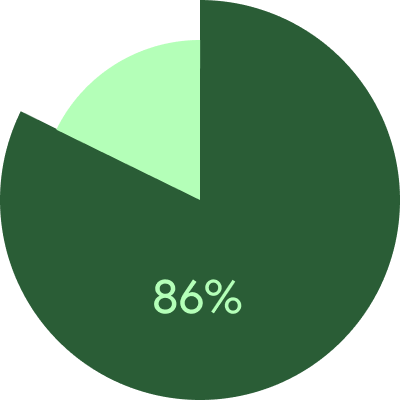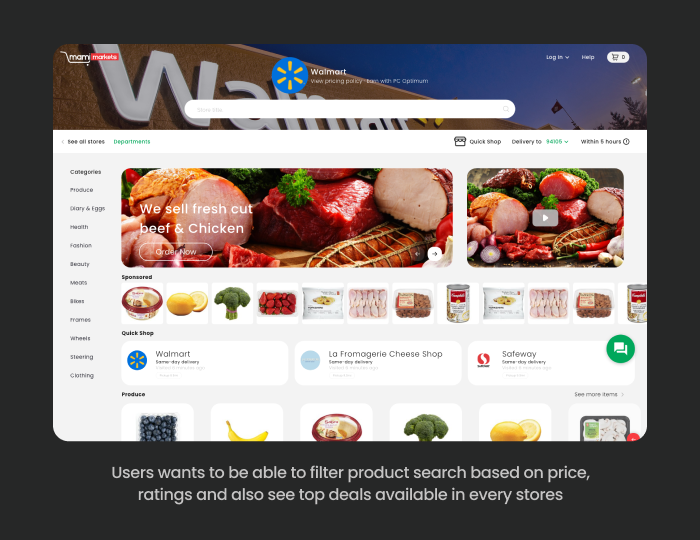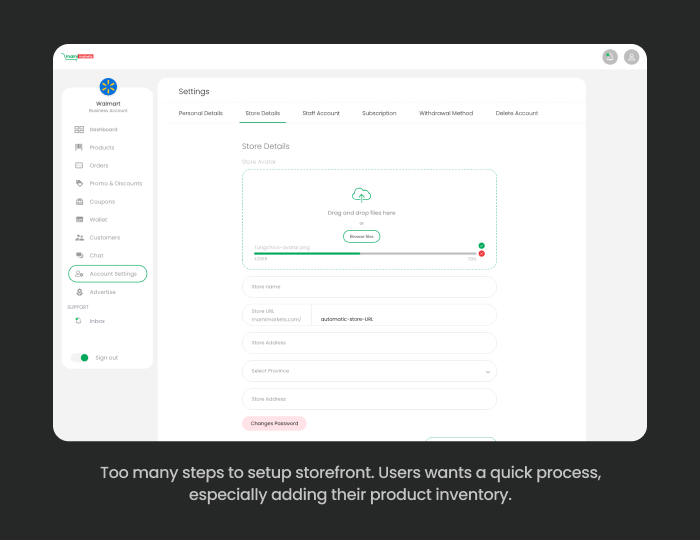MamiMarkets
Bridging the Gap for Ethnic Retailers and Shoppers
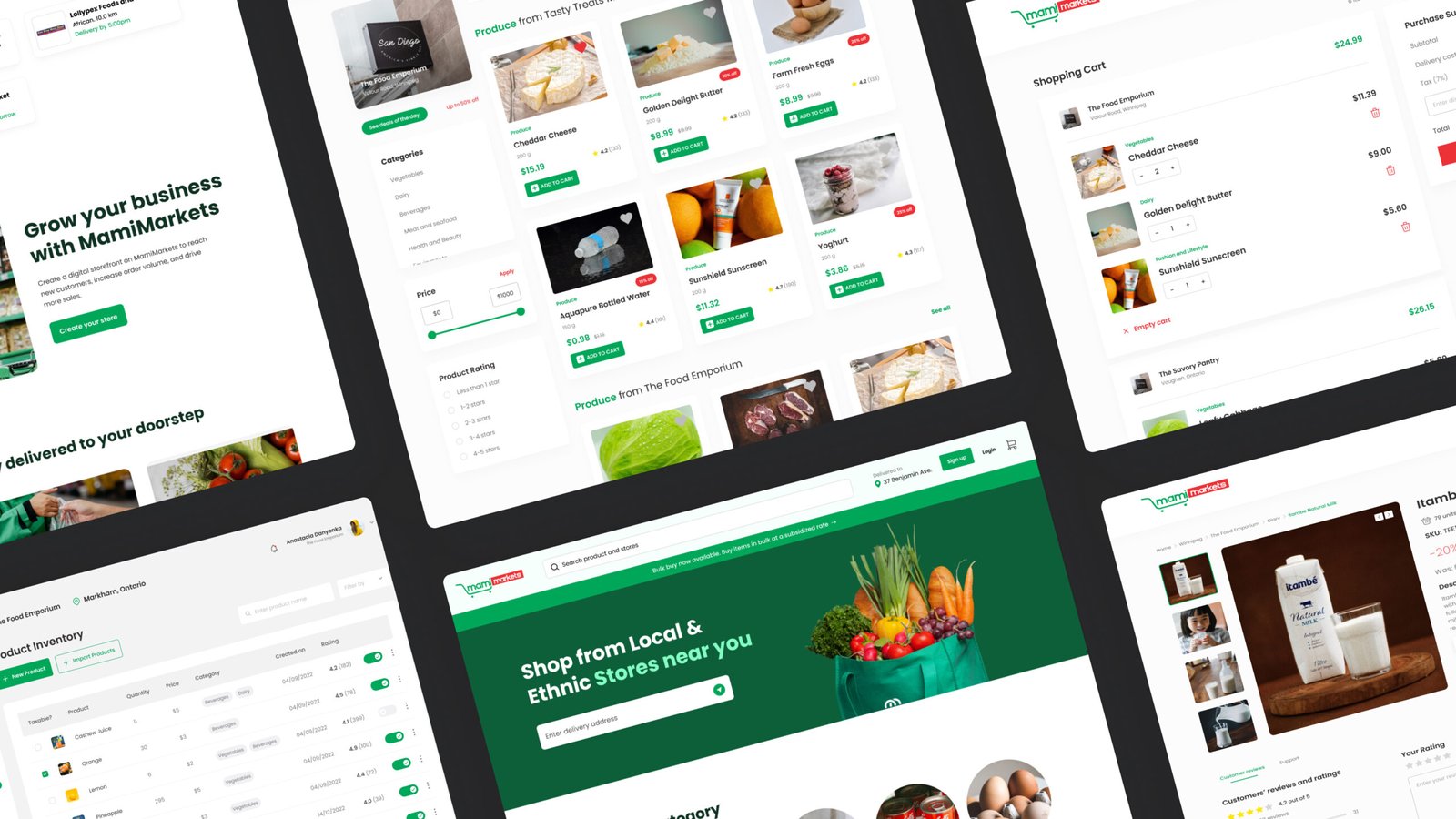
About the Project
As the population of immigrants grows in Canada, the demand for ethnic products has surged, but many ethnic stores still lack an online presence where Shoppers can easily access their favorite goods due to high fees, and technical complexity,
What would it mean to bridge the gap between the unique needs of small ethnic retailers and the growing demand for convenient online shopping?
My Role
Lead Product Designer
Brand Designer
User Researcher
Project Team
Tayo Olayinka, Suraj Fehintola, Moshood Temitope, Jide Fabanwo, Adeola Olayinka
Project Goal
I had 3 months to design MamiMarkets’ MVP
Founded in 2022, MamiMarkets is the first online marketplace tailored specifically for ethnic retailers and small businesses, helping them establish an online presence and reach a growing base of Shoppers looking for culturally diverse products. By offering an all-in-one solution for storefront management, delivery logistics, and marketing, MamiMarkets is transforming the way small businesses connect with their communities.
I joined the project in September 2023, with the primary objectives to:
- Design an intuitive user experience for both Shoppers and Vendors, based on user research and usability testing.
- Prepare MamiMarkets’ MVP for handoff to the development team by December 2023.
Discovery
Interviews and secondary research revealed a significant gap in the ethnic marketplace

~75% of ethnic consumers prefer shopping from culturally specific stores but struggle with their lack of online presence
(according to 21 research interviews)
research synthesis
MamiMarkets serves two primary user archetypes
I conducted a series of user interviews with 10 participants, including both Shoppers looking for culturally relevant products and Vendors who own ethnic retail stores. My goal was to understand the key archetypes that would engage with the MamiMarkets platform. Based on these interviews, I identified two main user archetypes.

The Convenience Seeker (Shoppers)
- Shops for culturally specific products and prefers to buy online for convenience.
- Their primary motivation is finding ethnic products easily and having them delivered directly to their doorstep.
The Local Entrepreneur (Vendors)
- Owns a small ethnic store with limited or no online presence.
- Their main motivation is to expand their business by reaching new customers online without dealing with high fees or technical complexity.

Information Architecture
Three foundational features for the MVP
Achieving all goals at the first launch was not feasible, so the MVP required a foundational system design that could scale as the platform grew. Based on our user research, we determined the MVP needed to focus on the following areas:
- Storefronts: Vendors need a simple, no-code way to create and manage their digital storefronts.
- Product Discovery: Shoppers need an intuitive way to search and explore culturally relevant products from ethnic stores.
- Personalized Notifications: Both Vendors and Shoppers want real-time communication on relevant offers and order statuses tailored to their preferences.

Usability Testing
Initial designs did not meet user needs effectively.
After designing a functional prototype for MamiMarkets, I wanted to validate the platform’s core features and assess its usability. Following a detailed research plan, I conducted usability testing with 10 participants: five Shoppers and five Vendors.
Usability test findings
- The search and filter features didn’t make it easy to find specific products.
- The storefront setup process was too complex, with unclear steps for adding products.
- The interface was visually overwhelming, especially on mobile devices.
- The dashboard lacked actionable insights, making it hard for Vendors to track sales performance.
Design Reiteration
Refined designs based on user feedback and stakeholders input.
Initial designs for MamiMarkets included a complex storefront setup process for Vendors, but usability testing revealed this approach was overwhelming for users with limited technical expertise. The interface was simplified to reduce the number of steps required to set up and manage storefronts. Additionally, delivery tracking screens for Shoppers were redesigned to display clearer, real-time updates on order statuses.
The original user flows for inventory management and product uploads were cumbersome for Vendors, leading to frustration during testing. To address this, I collaborated with stakeholders to streamline these flows, prioritizing intuitive controls and minimal effort for product uploads. Some advanced analytics features were deferred for future updates to focus on launching a more accessible MVP that met both user and business goals.


Before and after of the Vendor Dashboard UI
UI and Visual Design
A vibrant and culturally inclusive visual identity.
MamiMarkets’ visual brand reflects the energy and diversity of its users, with a color palette centered on green and red to symbolize growth, passion and connection paired with clean, intuitive layouts. Throughout the exploration process for MamiMarkets’s visual design, I ensured the interface met AAA accessibility standards.
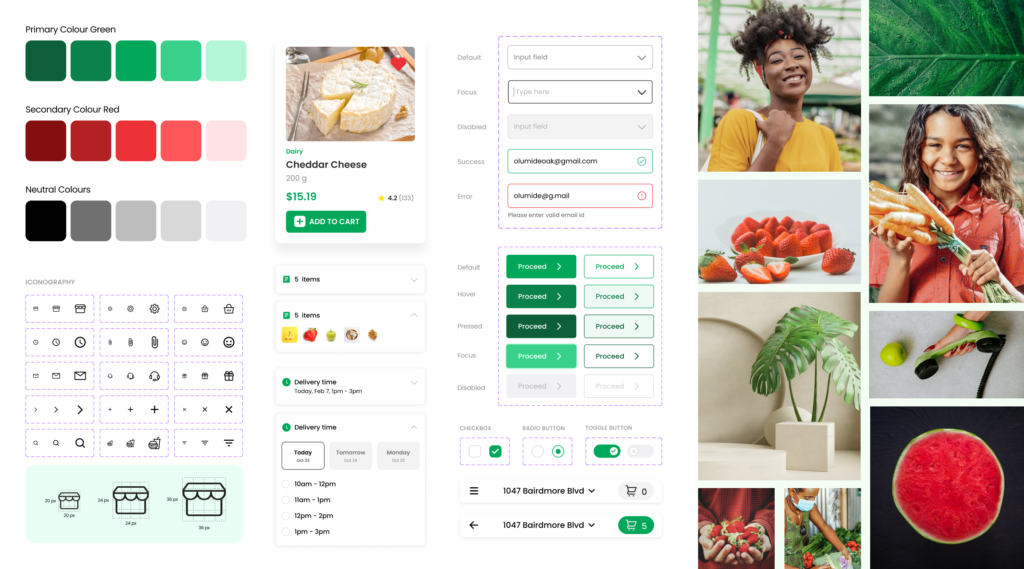
Final Designs
MamiMarkets: Simplifying online shopping and storefront management for ethnic retailers
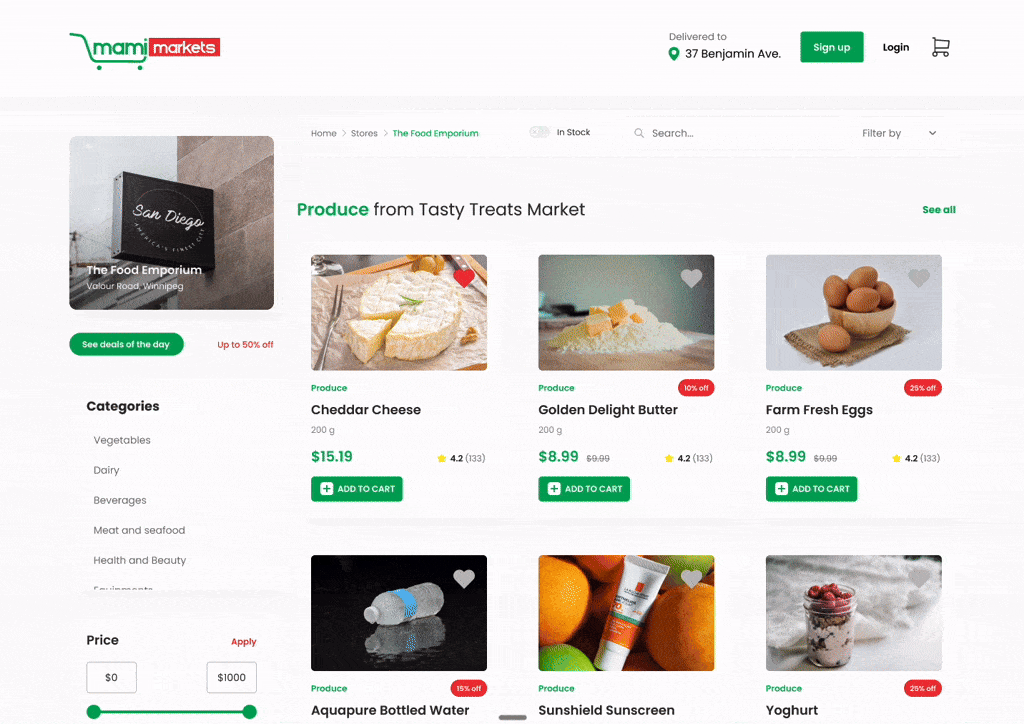
Effortless Product Search and Purchase for Shoppers
Shoppers can browse products from various ethnic stores, use filters to narrow down options, and complete purchases seamlessly. Real-time delivery tracking keeps them updated on order statuses.
Why?
A smooth shopping experience boosts engagement, ensuring Shoppers return to the platform for their cultural shopping needs.
Simple Storefront Setup for Vendors
Vendors can quickly set up and customize their digital storefronts, upload products, and manage inventory with minimal steps. Built-in analytics provide insights into sales performance and customer trends.
Why?
Reducing setup complexity lowers barriers for ethnic retailers to join, empowering them to expand their businesses online.

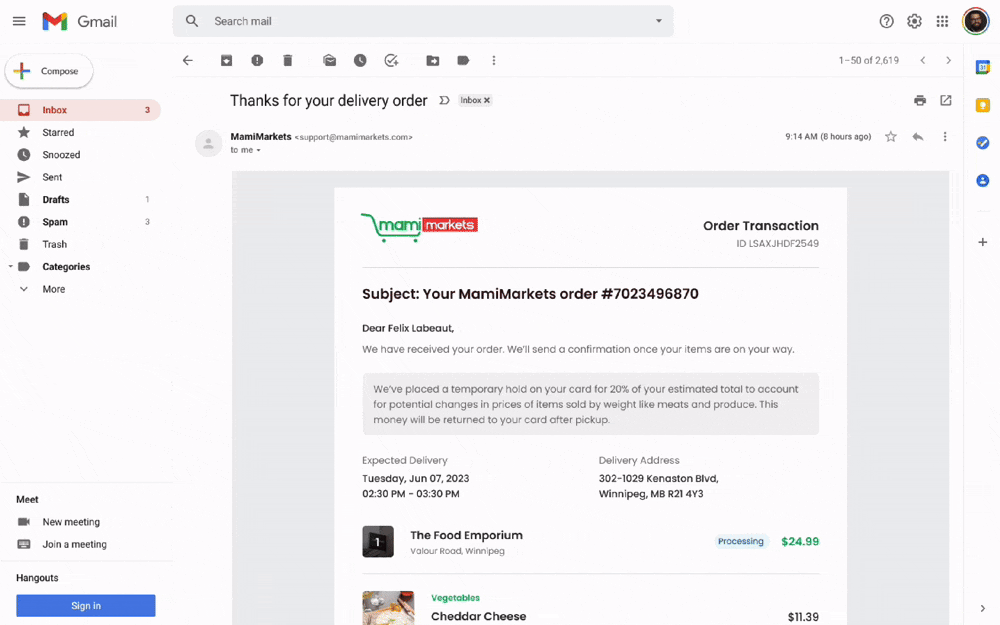
Non-Intrusive Notifications
Vendors and shoppers receive personalized in-app and email notifications on offers and order statuses, ensuring value without overwhelming users with excessive alerts.
Why?
Tailoring updates to individual preferences ensures a positive user experience, improves engagement, and builds customer trust.
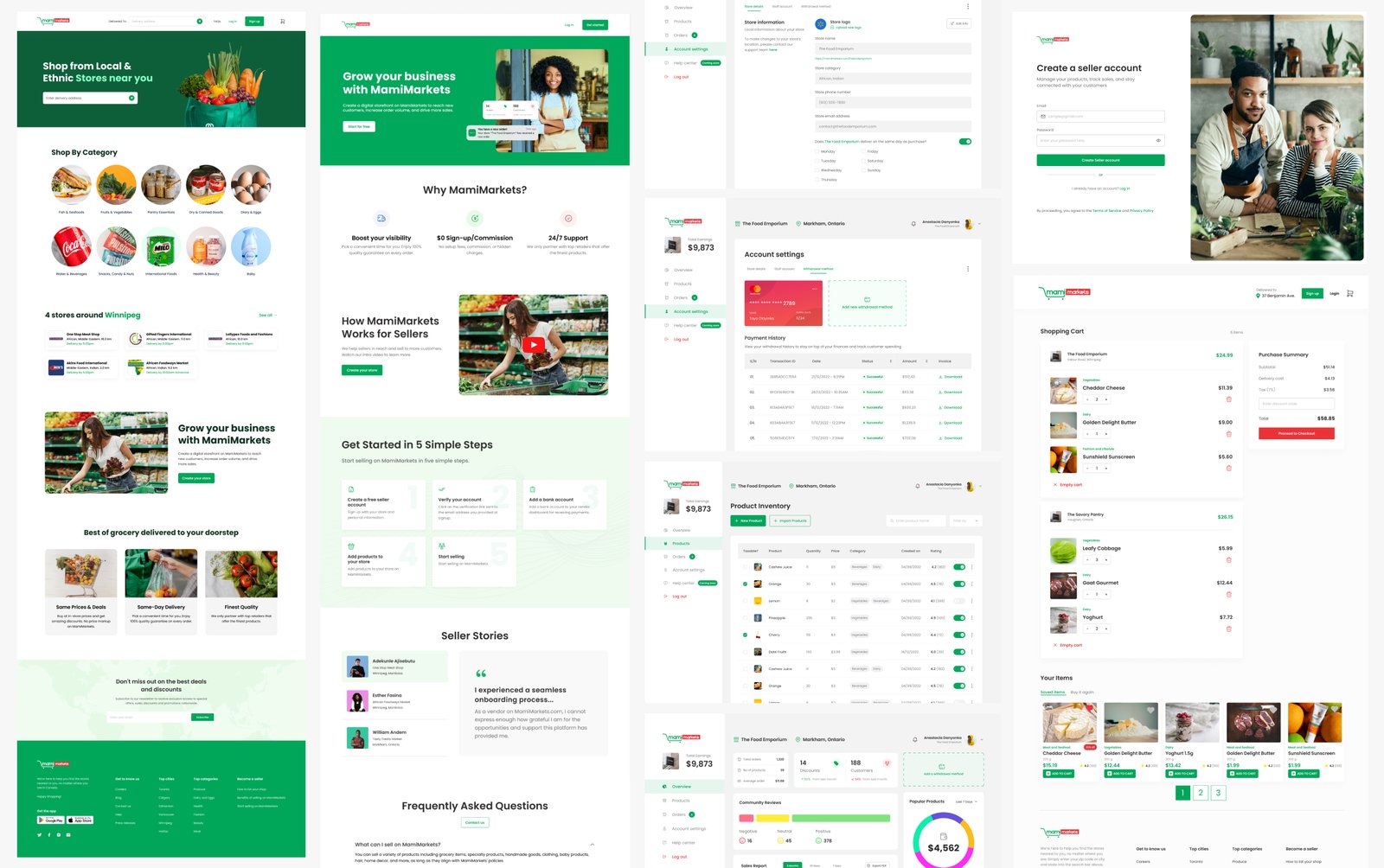
results and reflection
Strong product-market fit drove rapid growth and adoption ahead of the MVP launch.
The first version of MamiMarkets saw immediate validation from both Shoppers and Vendors, onboarding 5 vendors with 7 active stores and processing 10 orders within the first two weeks post-launch. These early wins demonstrated the platform’s alignment with the needs of its target audience.
I continued to collaborate with product and engineering teams to refine the roadmap, deferring advanced features like analytics and recommendations to future updates. Success metrics, including retention, Vendor adoption, and CSAT, were established to guide post-launch improvements and ensure continued value delivery.

